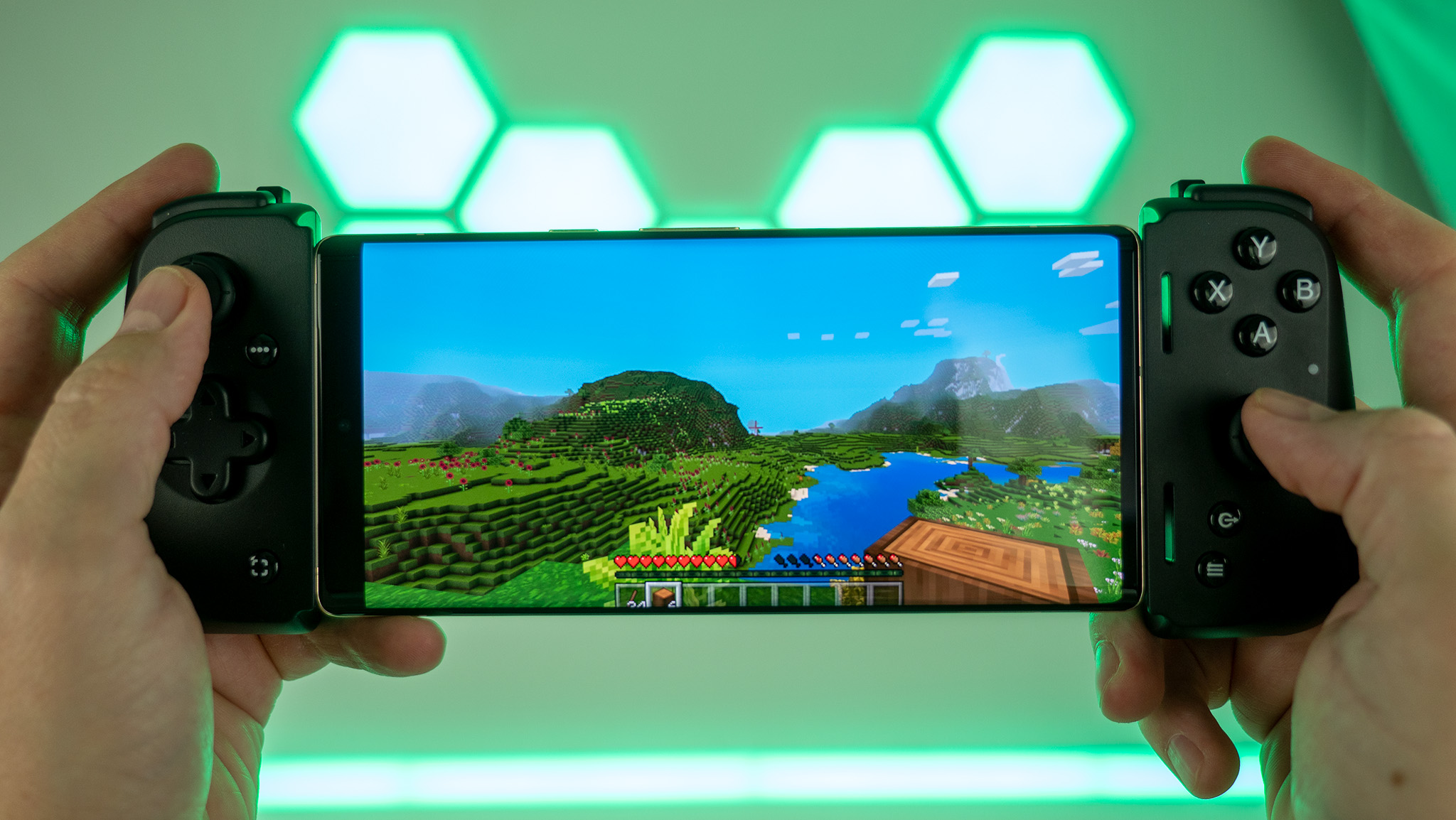The next generation is already living in the metaverse
So why further invest to build it?

Update 3/24/23: Looks like Tim Sweeney agrees with me. He's begun changing the discussion regarding Fortnite to pivot it as an "open metaverse." Much of this talk revolves around the recently released Unreal Editor for Fortnite which Sweeney discussed in an interview with Gamesindustry.biz. It's always fun to say I told you so. The original article follows.
It's Friday evening, and I'm sitting on my couch watching my son play Minecraft with his cousin, who lives 600 miles away. The two of them are squealing gleefully as they chase each other around a custom hide-and-seek map that one of them made, and that's when it hit me. The metaverse isn't something that we need to wait five to 10 years for. It's already here, and the next generation is living in it.
So, then how do we juxtapose that with the latest figures out of a report from The Information which shows that Meta — and other companies like it — are spending in upwards of $70 billion to build the metaverse over the next decade? As The Information’s article points out, this is twenty times the amount Apple invested when building the original iPhone.
But, here’s the deal. While many elements of the Metaverse as a noun certainly exist, it’s going to take a whole lot more to truly create a digital world that converges all the existing metaverse concepts into something interoperable. Of course, then, it would take a lot more money to put together than a single product. Duh.
But is it really necessary to make one cohesive virtual world? I’d like to explore that question in today’s Editor’s Desk piece.
What separates a metaverse from an online game

I've seen the argument that games like World of Warcraft and Everquest popularized the concept of an online world where players can assume an alter-ego and live out their days as something far more exciting than real life. And while those games did wonder for creating a virtual world that felt more like a real-world than any before them, they don't actually fit in the proper definition of a metaverse.
Why? Because, within those games, you're still only choosing from characters that the creators made to fit within a certain theme, and there's no real way to build or create your own worlds or items within them, either. Everything is still done within a predesigned framework, even if it is a massive one.
Get the latest news from Android Central, your trusted companion in the world of Android
Rather, games like Minecraft and Fortnite are far better representations of what we can and should expect from any sort of proper noun Metaverse in the future. Why so? Simply put, there are few, if any, restrictions to what a person can play as and what they can do.
Online games exist in a predetermined framework, while metaverses put few (or no) restrictions on what characters a person can play and what they can do or build.
Minecraft is obvious on the creation front. The game was literally made for players who enjoy exploring and building, giving them the tools to create almost anything they could think of using the game's unique voxel art style. As the years went by, Minecraft's updates have focused heavily on giving people the power to go beyond the in-game tools and create truly spectacular things — even games inside of the game.
Minecraft's marketplace has created a coherent way for creators to take brilliant worlds and character models they've made and sell them for real-world money. You can be Buzz Lightyear, you can explore the world of The Nightmare Before Christmas, you can play one of the millions of original concepts and characters, or just create your own.
Fortnite, too, has taken up the mantle of allowing players to be just about anything they want. In fact, it may be the single best example of how incredible a proper metaverse can be when everything comes together. Don't believe me? Check the video in this Tweet (written language warning) for what I think is likely the best single example I've seen for the game.
This sort of fandom mashup was only previously possible in bootlegged titles or fanfiction, yet here it is today in the most popular online game of all time.
As Goku runs through a field, the sound and visual flair of a Kamehameha rings on the horizon. Goku then jumps in the air and uses Spiderman's web shooters to quickly web swing from tree to tree until he gets to the players who were just fighting, only to pull out Darth Vader's Lightsaber and annihilate the player nearly instantly.
If that's not enough to convince you, how about a Xenomorph from the movie Aliens dancing to a Wu-Tang Clan song? Or, how about characters from animes like Dragon Ball Z and Naruto - along with plenty of original characters - having the time of their lives in a virtual BTS concert?
This sort of fandom mashup was only previously possible in bootlegged titles or fanfiction, yet here it is today in the most popular online game of all time. That's the power of the metaverse, and it's something that's really only materialized in the last few years as a real, living, breathing concept.
Spending more to get more

VR Chat isn't just some online forum that gives people a more visual way to meet up and discuss current events. It's an entire culture.
So, while Fortnite and Minecraft are probably two of the best examples of what you could call a metaverse in pop culture today, there is one more obvious example that exists only in VR: VR Chat.
As a completely free title, VR Chat is nothing short of mind-blowing and can be completely overwhelming for first-time users. VR Chat isn't just some online forum that gives people a more visual way to meet up and discuss current events. It's an entire culture, seen prominently in the festooning of catgirl avatars and a host of other things that you'll really understand if you're a regular user.
But, again, VR Chat isn't just a place for people and their virtual avatars to co-mingle while they sit on their couches at night. It's a place where people completely recreate classic games and even let you jump into the worlds of current-generation games like The Legend of Zelda: Breath of the Wild.
Just about everything you can think of has been remade in VR Chat. Whether it's playing Among Us VR before the actual official game comes out later this year, drifting cars in Ridge Racer — with proper PS1-era visuals — blasting imps in the original Doom while playing as your avatar, or tagging walls in the ever-lovable Jet Set Radio, VR Chat has it all.
Essentially, think of Meta's Metaverse as a combination of VR Chat and Pokemon Go, where people can interact with one another and make transactions anywhere they find themselves and on any device they feel like using.
So where does Meta's idea of a Metaverse (capital M) come into play? While VR Chat's aim is to be a virtual place for you to spend time with friends — including friends who don't have a VR headset with the game's desktop mode — Meta's concept goes beyond the four walls in your home and includes your phone and any other digital device you might have on your person.
Essentially, think of Meta's Metaverse as a combination of VR Chat and Pokemon Go, where people can interact with one another and make transactions anywhere they find themselves and on any device they feel like using.
It's this complexity that's going to be the hardest part, really, and it's also what makes Meta's Metaverse both the costliest and possibly the most transformative of all the metaverse concepts.
If we're still comparing what it costs to pioneer other technologies, estimates put the initial investments into the creation somewhere around $125 million dollars, or roughly $235 million in today's dollars. As The Information pointed out, Android took about $1 billion to create, while the original iPhone sits at around $3.4 billion.
With that being said, there's little chance the folks doing the engineering at the time really had any idea what the internet would truly become or how vast its stores of knowledge would be.
Likewise, a proper Metaverse would be even more all-encompassing than the initial internet infrastructure simply because it needs to bring so many things together in one massive, congruent virtual universe. It's no wonder such a design would be far more expensive and complex than the investment in a single product, as most of those comparisons point out.
A proper Metaverse would be even more all-encompassing than the initial internet infrastructure simply because it needs to bring so many things together in one massive, congruent virtual universe.
Given how monumentally transformative it could be, I'm not sure it's even fair to try to compare any of these things together. It's definitely fun to see how the numbers differ from one another — especially given that Meta looks to spend $70 billion on the development of the Metaverse over the next few years — but that cost also includes tertiary things like VR and AR headset development. More than $10 billion, to be specific.
But, if Meta is successful in figuring out a way to bring everyone's favorite brands, characters, places, and games all in one place, accessible through almost any device you could imagine, and create an entire ecosystem that benefits real people with real money, it'll have something truly transformational on its hands.
The fact of the matter is that it takes more than just imagination to make something as large and complex as a metaverse. It takes a lot of time, a lot of manpower, and a whole lot of money.
Whether Meta even hits the estimated $70 billion by 2026 is anyone's best guess but, based on Meta's recent hiring freeze and rumors that the company effectually won't take on new employees at all in 2023 tells me that the cost-cutting measures have already begun, and what seems like a bizarrely large number right now will diminish by the time the money starts pouring back into Meta's coffers from a more mature Metaverse concept.
In the meantime, we seriously need games like Minecraft, Roblox, and Fortnite on the Quest 2. At the very least, it looks like one of those is already on the way.

